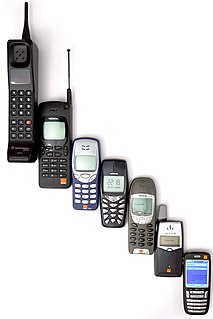 W
WA mobile phone, cellular phone, cell phone, cellphone, handphone, or hand phone, sometimes shortened to simply mobile, cell or just phone, is a portable telephone that can make and receive calls over a radio frequency link while the user is moving within a telephone service area. The radio frequency link establishes a connection to the switching systems of a mobile phone operator, which provides access to the public switched telephone network (PSTN). Modern mobile telephone services use a cellular network architecture and, therefore, mobile telephones are called cellular telephones or cell phones in North America. In addition to telephony, digital mobile phones (2G) support a variety of other services, such as text messaging, MMS, email, Internet access, short-range wireless communications, business applications, video games and digital photography. Mobile phones offering only those capabilities are known as feature phones; mobile phones which offer greatly advanced computing capabilities are referred to as smartphones.
 W
WThis is a list of best-selling mobile phones. The best-selling mobile devices are the Nokia 1100 and 1110, two bar phones released in 2003 and 2005, respectively. Both have sold over 250 million units. The best-selling touchscreen phones are the Apple iPhone 6 and 6 Plus, both released in 2014. Together, they have sold over 220 million units. The best-selling flip phone is the Motorola RAZR V3, released in 2004. It sold over 130 million units. The best-selling slider phone is the Samsung E250, released in 2006. It has sold over 30 million units.
 W
WAirplane mode, aeroplane mode, flight mode, offline mode, or standalone mode is a setting available on smartphones and other portable devices. When activated, this mode suspends the device's radio-frequency (RF) signal transmission technologies, effectively disabling all voice, text and phone services. GPS may or may not be disabled, because it does not involve transmitting radio waves.
 W
WAlways On Display (AOD) is a smartphone feature that shows limited information while the phone is asleep. It is widely available on Android handsets. On some Android phones, the feature is called Ambient Display or Active Display depending on its implementation and behavior. Depending on the phone's design, it may be a replacement feature or complementary to the Notification LED.
 W
WAMOLED is a type of OLED display device technology. OLED describes a specific type of thin-film-display technology in which organic compounds form the electroluminescent material, and active matrix refers to the technology behind the addressing of pixels.
 W
WAsus Zenfone 5 is a line of Android smartphones made by Asus. It is part of the Asus Zenfone series. The ZenFone 5 was unveiled on 27 February 2018 at the Mobile World Congress and went on sale on 6 August 2018, while the higher-end ZenFone 5Z was unveiled on 16 May 2018 and went on retail sale on 6 August 2018. The smartphone line also includes the lower-end ZenFone 5 Lite.
 W
WThe ZenFone 6 is a 2019 Android-based smartphone manufactured, released, and marketed by Asus. It is the only release in Asus' sixth-generation Zenfone lineup, directly succeeding the ZenFone 5Z. Asus chairman Jonney Shih unveiled the ZenFone 6 on 16 May 2019 in Valencia, Spain; Asus released in there the following day.
 W
WBreathometer was a device that claimed to measure someone's blood alcohol content using their iOS and Android smartphones. However, the app proved unreliable, and was shut down by the Federal Trade Commission. Breathometer was founded in September 2013 by Charles Michael Yim, who is the company’s current CEO. The company is headquartered in Burlingame, CA.
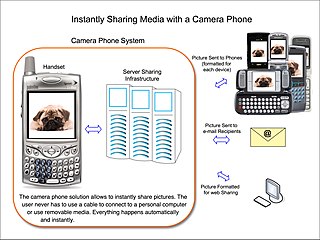 W
WA camera phone is a mobile phone which is able to capture photographs and often record video using one or more built-in digital cameras. It can also send the resulting image over the telephone function. The first commercial camera phone was the Kyocera Visual Phone VP-210, released in Japan in May 1999. It was a cordless phone as distinct from a cellular mobile phone.
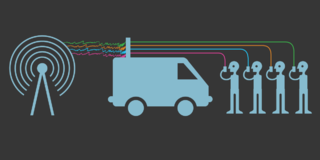 W
WCellphone surveillance may involve tracking, bugging, monitoring, eavesdropping, and recording conversations and text messages on mobile phones. It also encompasses the monitoring of people's movements, which can be tracked using mobile phone signals when phones are turned on.
 W
WA contact list is a collection of screen names. It is a commonplace feature of instant messaging, Email clients, online games and mobile phones. It has various trademarked and proprietary names in different contexts.
 W
WCOSMOS is a cohort study of mobile phone use and health. The study will investigate the possible health effects of long-term use of mobile phones and other wireless technologies. It is an international study being conducted in five European countries – UK, Denmark, Sweden, Finland, the Netherlands and France. In the UK Imperial College London is carrying out this research.
 W
WSome mobile phones support use of two SIM cards, described as dual SIM operation. When a second SIM card is installed, the phone either allows users to switch between two separate mobile network services manually, has hardware support for keeping both connections in a "standby" state for automatic switching, or has individual transceivers for maintaining both network connections at once.
 W
WThe FastPort was a proprietary polyconnection interface used on all Sony Ericsson cellphones between 2005 and 2010. Designed in response to Nokia's proprietary Pop-Port, FastPort provided data transfer, charging, headset and speaker connections through a common interface. It was discontinued in 2010 and replaced with a micro-USB for charging and data, and a TRRS connection for audio (headphones).
 W
WFoldable smartphones are a family of smartphone form factors utilizing hinged flexible displays. Devices whose displays fold on a vertical axis are designed to fold out into a wider, tablet-like form, but are still usable in a smaller, folded state; the display may either wrap around to the back of the device when folded, or use a booklet-like design where the larger, folded screen is located on the interior, and a screen on its "cover" allows the user to interact with the device without opening it. Horizontally-folding smartphones have also been produced, typically using a clamshell form factor.
 W
WGeneric Q5 TV Mobile cellphone Dual SIM card is a generic phone, made in China and designed based in the BlackBerry Q5 cellphone. This phone comes under different brand names and colors, it has a microSD card slot in the back, and may come with one or two SIM card slots that allows the phone to have two phone numbers at the same time.
 W
WHagenuk MT-2000 was a mobile phone device launched in 1994. The device was designed and manufactured by Hagenuk's development centre in Støvring, Denmark. The phone was, together with its predecessor Hagenuk MT-900 from 1992, some of the first mobile phones in the industry using Soft keys. Finally, the MT-2000 was the first in the industry to have a built-in antenna, instead of the traditional extension antennas. It was believed until recently that it was the first smartphone to have installed a video game but then it turned out that it was the third one - the first two were Siemens S1 and the IBM Simon (Scramble) - both built in 1993 and released in 1994. There were two variants of the phone produced - with and without dedicated physical buttons for volume up and down and power on/off.
 W
WHP Elite x3 is a premium Windows 10 Mobile smartphone produced by Hewlett-Packard. It was officially announced on February 21, 2016, and released later that year.
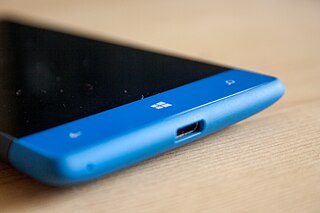 W
WThe Windows Phone 8S by HTC was announced by HTC Corporation on September 19, 2012 and released on December 7, 2012 in Canada. It is a cheaper, lower-end version of the Windows Phone 8X by HTC. Despite its availability in Canada, HTC announced that the 8S will not be sold in the United States because the company plans to focus instead on the 8X, which is considered its signature phone on the Windows operating system.
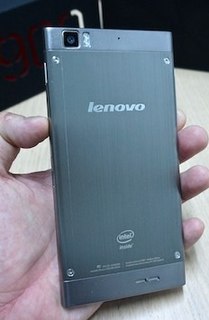 W
WThe Lenovo IdeaPhone K900 is a high-end smartphone with a large screen. The K900 was unveiled at the 2013 International CES in Las Vegas.
 W
WA liquid contact indicator (LCI) is a small indicator that turns from white into another color, typically red, after contact with water. Those indicators are small stickers that are placed on several points within electronic devices like laptops and smartphones. In case of a defective device, service personnel can check whether the device might have suffered from contact with water. After contact with water, or other liquids, the device is not covered by warranty. Liquid contact indicators are also known by other names such as water damage tape, water damage sticker, water contact indicator tape, liquid submersion indicator.
 W
WThe notion of making media mobile can be traced back to the “first time someone thought to write on a tablet that could be lifted and hauled – rather than on a cave wall, a cliff face, a monument that usually was stuck in place, more or less forever”. In his book Cellphone, Paul Levinson refers to mobile media as “the media-in-motion business.” Since their incarnation, mobile phones as a means of communication have been a focus of great fascination as well as debate. In the book, Studying Mobile Media: Cultural Technologies, Mobile Communication, and the iPhone, Gerard Goggin notes how the ability of portable voice communication to provide ceaseless contact complicates the relationship between the public and private spheres of society. Lee Humphrey's explains in her book that now, "more people in the world today have a mobile phone than have an Internet connection".
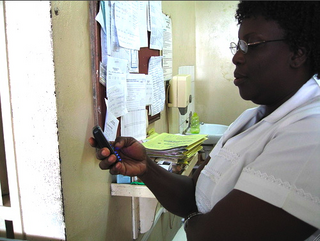 W
WmHealth is an abbreviation for mobile health, a term used for the practice of medicine and public health supported by mobile devices. The term is most commonly used in reference to using mobile communication devices, such as mobile phones, tablet computers and personal digital assistants (PDAs), and wearable devices such as smart watches, for health services, information, and data collection. The mHealth field has emerged as a sub-segment of eHealth, the use of information and communication technology (ICT), such as computers, mobile phones, communications satellite, patient monitors, etc., for health services and information. mHealth applications include the use of mobile devices in collecting community and clinical health data, delivery/sharing of healthcare information for practitioners, researchers and patients, real-time monitoring of patient vital signs, the direct provision of care as well as training and collaboration of health workers.
 W
WThe Microsoft Lumia 650 is a smartphone developed by Microsoft, officially revealed on February 15, 2016. It is the successor to the Microsoft Lumia 640 and is aimed primarily at business users, with support for Microsoft's business applications as well as security features like device encryption and remote wiping. Due to hardware limitations, it does not support Continuum. The phone was available in both single- and dual-SIM variants and is the most recent model in the Lumia series, with Microsoft discontinuing mobile hardware production the following year.
 W
WMicrosoft Lumia 950 is a smartphone developed by Microsoft, officially revealed on October 6, 2015 alongside the larger Lumia 950 XL. The phone was first released on AT&T in the United States on November 17, 2015, and subsequently made available on the Microsoft Store as well as in other countries.
 W
WThe Microsoft Lumia 950 XL is a smartphone developed by Microsoft, officially revealed on October 6, 2015 and released on November 20, 2015 alongside the smaller Lumia 950. The Lumia 950 XL is the successor to the Nokia Lumia 1520 and is among the first phones to natively run Windows 10 Mobile. The phone is primarily aimed at users desiring a flagship device, in contrast to Microsoft's previous strategy of targeting developing markets with low-end hardware.
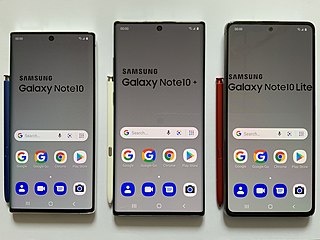 W
WMobile computing is human–computer interaction in which a computer is expected to be transported during normal usage, which allows for the transmission of data, voice, and video. Mobile computing involves mobile communication, mobile hardware, and mobile software. Communication issues include ad hoc networks and infrastructure networks as well as communication properties, protocols, data formats, and concrete technologies. Hardware includes mobile devices or device components. Mobile software deals with the characteristics and requirements of mobile applications.
 W
WPhone charms are charms that are connected to a mobile device either via a phone connector or silicone plug that fits into the jack port sometimes provided with circle cotters and a lobster clasp, or a small strap knotted with a cow hitch knot, or a lanyard. Some phones may have a loop hole through which a strap can be attached or a phone case may be needed for the strap in phones that lack a loop hole. In Japan, they are known as "keitai straps" (携帯ストラップ). Phone straps have now become a cultural phenomenon beyond their basic utilities, and they may be themed with famous characters such as Hello Kitty. Phone straps may also serve additional functions, such as screen cleaning.
 W
WThe features of mobile phones are the set of capabilities, services and applications that they offer to their users. Mobile phones are often referred to as feature phones, and offer basic telephony. Handsets with more advanced computing ability through the use of native code try to differentiate their own products by implementing additional functions to make them more attractive to consumers. This has led to great innovation in mobile phone development over the past 20 years.
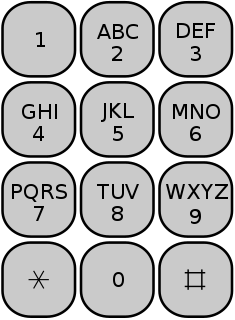 W
WMulti-tap (multi-press) refers to a text entry system for mobile phones. The alphabet is printed under each key in a three-letter sequence as follows; ABC under 2 key, DEF under 3 key, etc. Exceptions are the "7" key, which adds a letter ("PQRS"), and the "9" key which includes "Z". Punctuation is typically accessed via the "1" key and various functions mapped to the "*" key and "#" key.
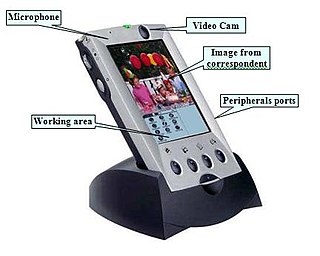 W
WThe first integration between mobile phone and Palm occurred in 1999, as a result of an Italian–lead project submitted to the action line V1.1 CPA1 "Integrated application platforms and services" 5th Framework Program of the European Community . The project, called MTM , was a multimedia platform, including both phone and PDA features; it also integrated the first miniature camera and a unidirectional microphone for video conferencing and commands interpretation through voice recognition. The creator and coordinator of the project, Alessandro Pappa, worked in a team with other European partners:PointerCom Sirius Communication NV Sistemas Expertos SA Matla System University of Avignon – LIA Comune di Roma – Eurolaboratorio DKFZ-MBI, Div. Medical and Biological Informatics, German Cancer Research Center TZMI, Steinbeis-Transferzentrum Medizinische Informatik Universidad Politécnica de Madrid Clinica Femenia Clinica Nuestra senora del Rosario
 W
WThe Ninetology Vox (C1240) is a dual band GSM 900/1800 color mobile phone manufactured by Ninetology with dual SIM capabilities. It was announced in November 2012 via a campaign called VOX G.O.L.D Fund that aimed to raise donations funds for Yayasan Maha Karuna.
 W
WThe Nokia Lumia 505 is a budget smartphone developed by Nokia that runs Microsoft's Windows Phone 7.8 operating system. It was announced in December 2012 as a Telcel-exclusive device and became available in early January 2013 in Mexico. In late January 2013 the Lumia 505 became available in Colombia, Chile and Peru on Claro Americas. It was exclusive to the Latin American market and was not announced or released for any other markets.
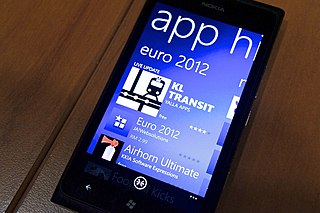 W
WThe Nokia Lumia 900 is a Windows Phone-powered smartphone, first unveiled on January 9, 2012 by Nokia at Consumer Electronics Show 2012, where it won the Best Smartphone award in January 2012. The phone has 4G LTE support and was released in April 2012. The Lumia 900 was the flagship smartphone of the Lumia range until the release of its successor, the Lumia 920.
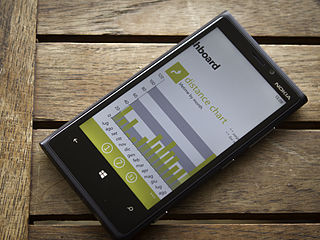 W
WNokia Lumia 920 is a smartphone developed by Nokia that runs the Windows Phone 8 operating system. It was announced on September 5, 2012, and was first released on November 2, 2012. It has a 1.5 GHz dual-core Qualcomm Krait CPU and a 4.5" IPS TFT LCD display, as well as a high-sensitivity capacitive touchscreen that can be used with gloves and fingernails; the display is covered by curved Gorilla Glass and has a 9 ms response time. The phone features an 8.7-megapixel PureView camera with OIS; it was the first smartphone to offer that technology, as well as to support Qi inductive charging. The phone comes with 32 GB of internal storage, but has no expandable storage.
 W
WNokia Lumia 925 is a smartphone developed by Nokia that runs Microsoft's Windows Phone 8 operating system. It was announced on 14 May 2013, described as a "new interpretation" of the Nokia Lumia 920, and released in June 2013. A separate 925T version was announced for the TD-SCDMA networks in China.
 W
WThe Nokia Lumia 928 is a high-end smartphone developed by Nokia that runs Microsoft's Windows Phone 8 operating system. It was announced on May 10, 2013, as a Verizon-exclusive variant of the Nokia Lumia 920. It became available on May 16, 2013, on a two-year contract for $99.99 in the United States. It is exclusive to the U.S. and Canadian markets.
 W
WA Notification LED is a small RGB or monochrome LED light usually present on the front-facing screen bezel of smartphones and feature phones whose purpose is to blink or pulse to notify the phone user of missed calls, incoming SMS messages, notifications from other messaging apps etc. It usually pulses in a continuous way to draw the attention of the user. It is a part of the device's notification system that uses a cloud-powered push notification service to relay remote notification messages to the user, or local notifications. Similar to audio notifications, a notification LED is a very battery-efficient way to inform the user of new notifications without turning on the screen at all.
 W
WThe OPPO R15 Pro is a phablet smartphone based on Android 8.1, which was unveiled in March 2018.
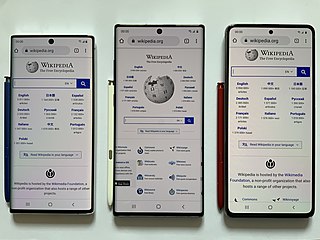 W
WThe phablet is a class of modern mobile devices combining or straddling the size format of smartphones and tablets. The word itself is a portmanteau of the words phone and tablet.
 W
WA prepaid mobile device is a mobile device such as a phone for which credit is purchased in advance of service use. The purchased credit is used to pay for telecommunications services at the point the service is accessed or consumed. If there is no credit, then access is denied by the cellular network/Intelligent Network. Users can top up their credit at any time using a variety of payment mechanisms.
 W
WThe Samsung ATIV S is a touchscreen, slate smartphone manufactured by Samsung Electronics running the Windows Phone 8 operating system, upgradeable to Windows Phone 8.1. The ATIV S is Samsung's first Windows Phone 8 device, and one of the first devices under its ATIV series of Microsoft Windows-based products. It was shown at the IFA 2012 in Berlin and was the first Windows Phone 8 device to be officially unveiled, ahead of the Nokia Lumia 920.
 W
WThe Samsung Galaxy A7 (2015) is an Android phablet manufactured by Samsung Electronics and released in February 2015. Samsung Galaxy A7 (2016) is a successor to the Samsung Galaxy A7 (2015).
 W
WThe Samsung Intensity series is a line of mobile phone devices produced by Samsung Electronics, all of which are feature phones.
 W
WThe Samsung SCH-S380C is a mobile phone released in October 2012 by Samsung and shipped by TracFone. It has the ability to play music, watch videos, and apps that are available for purchase. It has a 1.3x megapixel camera, with a basic 1000 mAh battery power. The music can be put on the phone by installing a driver on the Samsung website.Go here for phone tutorial http://tracfone.devicebits.com/tracfone/home.seam?custId=TFSAS380C&locale=en_US&popup=true
 W
WA satellite telephone, satellite phone or satphone is a type of mobile phone that connects to other phones or the telephone network by radio through orbiting satellites instead of terrestrial cell sites, as cellphones do. The advantage of a satphone is that its use is not limited to areas covered by cell towers; it can be used in most or all geographic locations on the Earth's surface.
 W
WA selfie stick is used to take photographs or video by positioning a digital camera device, typically a smartphone, beyond the normal range of the arm. This allows for shots to be taken at angles and distances that would not have been possible with the human arm by itself. The sticks are typically extensible, with a handle on one end and an adjustable clamp on the other end to hold the device in place. They are most commonly used for taking selfies with camera phones.
 W
WSilent mode is a setting available on mobile phones and pagers that, when activated, disables the ringtones and, in some cases, also the vibrating alerts or alarm. Unlike the airplane mode, the silent mode still allows the device to receive and send calls and messages.
 W
WSpigen Inc, commonly known as Spigen, is a South Korean mobile phone accessory maker based in the United States that makes cases, screen protectors and other accessories for popular smartphone models. Spigen Inc. was formerly SGP Korea, a South Korean mobile accessory company, established in 2004. As Spigen, SGP Korea's United States business brand, expanded, SGP Korea changed their company name to Spigen Korea in November 2013.
 W
Wverykool is a series of mobile phones, tablets and accessories by Hipercell USA LLC, a company with headquarters in Miami, FL. The line was launched in 2006 by Infosonics Inc. and includes accessories, cell phones, tablets and smartphones. The verykool product line is sold in over 20 countries. It is marketed under the verykool brand name in the United States, Latin America, and the Caribbean where they are shipped to network operators, retailers and distributors. verykool is known for its line of inexpensive unlocked phones with dual sim card options as well as its rugged line of phones.
 W
WA vibrating alert is a feature of communications devices to notify the user of an incoming connection or message. It is particularly common on mobile phones and pagers and usually supplements the ring tone. Most 21st-century mobile phones are fitted with a vibrating alert, as are smartwatches.
 W
WThe ZTE Orbit is a budget smartphone developed by ZTE that runs Microsoft's Windows Phone 7.5 operating system. It was announced on February 27, 2012 and became available in September 2012. The Orbit is the first Windows Phone device to include near field communication. In late September 2012 it was announced a CDMA variant of the Orbit would also launch as the ZTE Render in the US on US Cellular.